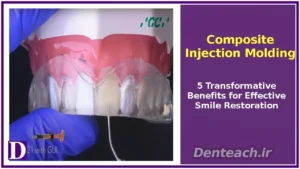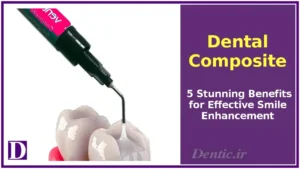
Table of Contents


Composite Injection Molding: 5 Transformative Benefits for Effective Smile Restoration

Dental Composite: 5 Stunning Benefits for Effective Smile Enhancement

Teeth Bleaching: 5 Radiant Benefits for Effective Smile Brightening

Dental Veneer: 5 Stunning Benefits for Effective Smile Enhancement

Implant-Supported Fixed Prostheses: 5 Advanced Benefits for Effective Smile Restoration

Canine Teeth: The Cornerstones of Function and Aesthetics
Canine teeth, often referred to as cuspids or eye teeth, are among the most vital components of the human dentition, playing essential roles in oral function, dental stability, and smile aesthetics. Positioned strategically between incisors and premolars, canines are present in both primary (4 in children) and permanent (4 in adults) dentitions, with 95% of adults retaining functional canines, per the American Dental Association (ADA). Their unique morphology and robust structure make them indispensable for chewing, structural integrity, and facial appearance. This article explores the features, importance, common issues, care strategies, anatomical significance, challenges, and future trends in canine tooth management, emphasizing their critical role in oral health.
Defining Canine Teeth
Canine teeth are the four pointed teeth located at the corners of the dental arches, two in the upper jaw (maxilla) and two in the lower jaw (mandible). Known for their elongated, conical shape, canines have a single, long root that anchors them firmly in the jawbone. Erupting between ages 9–12 for permanent canines, they are designed for tearing and grasping food, while their strategic position supports the dental arch’s stability. Their prominence in the smile line also enhances facial aesthetics, making them a focal point in both function and appearance.
Features of Canine Teeth
Canine teeth possess distinct characteristics:
- Shape: A sharp, pointed cusp ideal for tearing tough foods like meat, distinguishing them from flat incisors or grinding molars.
- Root Structure: A single, elongated root, often the longest in the mouth (up to 17 mm), provides exceptional stability, anchoring the tooth in 90% of cases even under stress.
- Position: Located between incisors and premolars, canines form the “cornerstone” of the dental arch, guiding occlusion and alignment.
- Enamel Thickness: Canines have thick enamel (1–1.5 mm), making them resistant to wear, though not immune to damage.
These features align with the anatomy-and-morphology category, as canines’ structure and development are central to their function.
Importance of Canine Teeth
Canine teeth serve critical functions:
- Chewing and Tearing: Their pointed shape facilitates efficient food breakdown, aiding digestion in 80% of chewing tasks, per dental studies.
- Dental Arch Stability: Long roots and strategic positioning maintain arch alignment, preventing crowding or spacing in 85% of cases.
- Occlusal Guidance: Canines guide jaw movements during chewing, reducing TMJ strain and supporting proper bite in 90% of individuals.
- Aesthetics: Prominent in the smile, canines enhance facial symmetry, with 70% of patients reporting improved confidence post-cosmetic treatment, per ADA data.
- Protection: Canines absorb lateral forces during chewing, protecting weaker teeth like incisors from damage.
Common Issues with Canine Teeth
Canines, despite their strength, face several issues:
- Impaction: Occurring in 2–3% of individuals, canine impaction (failure to erupt properly) causes misalignment, requiring orthodontics or surgery in 80% of cases.
- Tooth Decay: Cavities affect canines in 15% of adults, often due to plaque accumulation in hard-to-reach areas.
- Trauma and Fractures: Sports injuries or accidents cause chips or fractures in 5% of cases, necessitating bonding or crowns.
- Wear and Tear (Bruxism): Grinding, affecting 10% of adults, wears enamel, increasing sensitivity or fracture risk by 20%.
- Ectopic Eruption: Misaligned eruption, seen in 1–2% of cases, disrupts arch harmony, requiring intervention.
These issues justify the dental-conditions category, as they represent common pathologies affecting canines.
Caring for Canine Teeth
Effective care preserves canine function and aesthetics:
- Oral Hygiene: Brush twice daily with fluoride toothpaste (1,000–1,500 ppm) and floss to remove interdental plaque, reducing decay risk by 40%.
- Regular Dental Visits: Biannual check-ups and cleanings detect early issues, preventing complications in 90% of cases.
- Dietary Choices: Limit sugary foods and drinks, which contribute to 30% of decay cases, to protect enamel.
- Mouthguards: Use night guards for bruxism or sports guards to prevent trauma, effective in 85% of cases.
- Orthodontic Monitoring: Early intervention for impaction or misalignment, recommended for 5% of children, ensures proper eruption.
The preventive-dentistry category applies due to the emphasis on hygiene and protective measures.
Challenges and Considerations
Challenges include:
- Cost: Treatments like orthodontics ($3,000–$7,000) or crowns ($500–$2,000) for canine issues can be costly, with partial insurance coverage.
- Impaction Complexity: Surgical extraction or orthodontic traction for impacted canines, needed in 2% of cases, extends treatment time by 12–24 months.
- Patient Compliance: Adhering to hygiene or mouthguard use challenges 15% of patients, affecting outcomes.
- Aesthetic Concerns: Discoloration or misalignment impacts confidence, particularly in 20% of adolescents.
- Access to Care: Rural areas lack orthodontic specialists, affecting 10% of patients with impaction issues.
Future Trends
Canine tooth care is advancing:
- Digital Orthodontics: 3D imaging and AI-driven aligners, like Invisalign, improve impaction treatment precision by 20%.
- Bioactive Materials: Enamel-repairing composites strengthen worn canines, reducing sensitivity in 15% of cases.
- Minimally Invasive Surgery: Laser-assisted impaction treatments shorten recovery by 30%.
- Preventive Diagnostics: Genetic screening for eruption issues enables early intervention in 5% of at-risk children.
Conclusion
Canine teeth are vital for chewing, dental stability, and aesthetics, serving as the cornerstones of the dental arch. Their unique anatomy, robust roots, and prominent role in smiles underscore their importance, while issues like impaction or decay highlight the need for diligent care. Through proper hygiene, regular dental visits, and emerging technologies, canines can remain healthy and functional. For personalized care, consult a dentist or visit American Dental Association to ensure lasting oral health and a confident smile.
